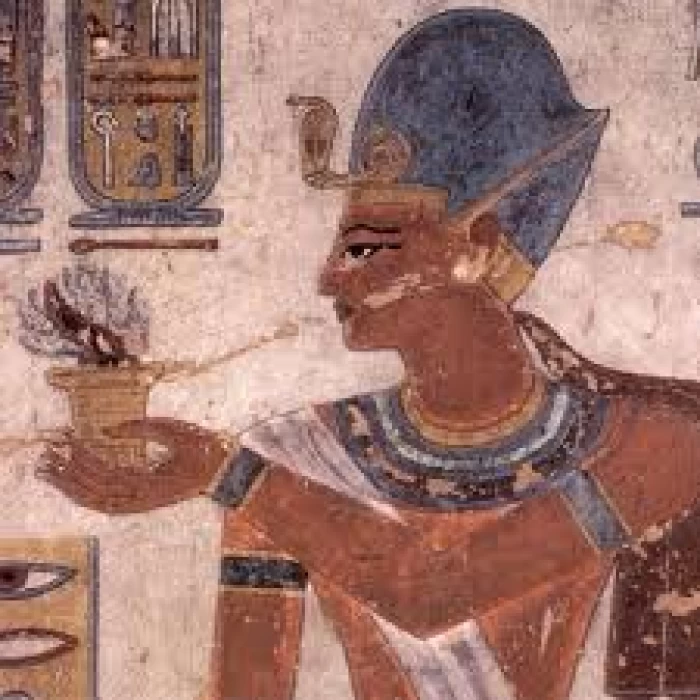- Home
-
Egypt Day Tours
- Cairo Day Tours
- Luxor Day Tours
- Aswan Day Tours
- Sharm El Sheikh excursions
- Hurghada Day tours
- Dahab Day Tours
- Taba Day Tours
- Marsa Alam Day Tours
- Cairo Day Tours from Airport
- Cairo Half Day Tours
- Cairo Overnight Tours packages
- Cheap Giza Pyramids budget Tours
- Egypt Wheelchair Accessible Day Tours
- Cairo Cheap Budget Tours
- Alexandria day tours
- Nuweiba excursiones
- El Gouna Day Tours
- Port Ghalib Day Tours
- Soma Bay Excursions
- Makadi Bay Excursions
-
Egypt Travel Packages
- Egypt Desert Safari Tours
- Egypt Classic Tours
- Egypt Christmas Tours
- Egypt Easter Tours
- Egypt Luxury Tours
- Egypt Nile Cruise Tours
- Egypt Holidays Hot Offers
- Egypt Tour Itineraries
- Cairo Short Breaks packages
- Egypt Wheelchair Accessible Tours
- Honeymoon Tour Packages
- Egypt Cheap Budget Tours
- Egypt group tour packages
- Egypt Luxury Small Group Tours
- Egypt Family Tours
- Egypt and Holy Land Tours
- Egypt Shore Excursions
Latest Articles
-
![Atlas Studios Atlas Studios]()
Atlas Studios
Atlas Studios, also known as Film City, is a well-known film studio in Morocco. It has been used as a filming location for many international movies and TV shows.
-
![Rabat Rabat]()
Rabat
Rabat is the capital city of Morocco, located on the country's Atlantic coastline. It is situated across the Bouregreg River from the city of Salé and forms the Rabat-Salé urban area. With a rich history dating back to the Roman era, Rabat is known for its blend of modernity and traditional Moroccan architecture.
-
![Erfoud Erfoud]()
Erfoud
Erfoud is a city located in eastern Morocco, known as the gateway to the Sahara Desert. It is a popular destination for travelers seeking to explore the stunning desert landscapes and experience the unique culture and hospitality of the region. Erfoud offers opportunities for camel trekking, visits to the nearby Merzouga Dunes, and exploring the local markets and traditional crafts.
-
![Merzouga Dunes Merzouga Dunes]()
Merzouga Dunes
The Erg Chebbi Dunes, also known as the Merzouga Dunes, are a stunning natural wonder located in southeastern Morocco. These majestic dunes stretch as far as the eye can see, with some reaching heights of up to 150 meters. The Erg Chebbi Dunes are a popular destination for travelers looking to experience the beauty of the Sahara Desert.
-
![Khenifiss National Park Khenifiss National Park]()
Khenifiss National Park
Explore the beauty of Morocco's natural reserve at Khenifiss National Park. Located in the southwestern part of the country, this park is home to diverse wildlife and stunning landscapes. Visitors can enjoy hiking, birdwatching, and exploring the unique ecosystems found in the park.
-
![Ouzoud Waterfalls Ouzoud Waterfalls]()
Ouzoud Waterfalls
The Ouzoud Waterfalls, located in the Atlas Mountains of Morocco, are a stunning natural wonder and a popular tourist destination. The falls cascade over a series of rocky cliffs, creating a breathtaking sight and a refreshing mist in the air. Visitors can hike down to the base of the falls, passing by olive groves and encountering local Barbary macaque monkeys along the way.

King Ramses III
Known for his valiant military prowess, Ramses III rescued his kingdom from the assailed peoples of the sea. He carried out his father's work, which had been started during the thirty years of his reign, to put an end to the chaos following the death of Siptah, the seventh pharaoh of the XIX Dynasty.
During Ramses III's reign, the first strike in history occurred, during the construction of his mortuary temple on the west bank of Luxor near Hatshepsut temple, Valley of the Kings, and Vally of the Queens.
During the construction of the temple of Madinat Hapu, the workers committed the first strike in ancient Egyptian History when they didn't receive their wages for a few months. Hence, they all stood up for their rights as one man sticking against Ramses III and stopped all kinds of work until they were particularly compensated.
Egypt Tours FAQ
Read top Egypt tours FAQs
Stars are increased as services and the general state of the accommodation improve, so it is easier to imagine 5-star deluxe (or whatever suffix is added to 5 stars) being 6 stars.
The relationship between the Pharaohs and the Egyptian gods was a fundamental aspect of ancient Egyptian religion and society. It was based on the belief that Pharaohs were divine rulers and earthly representatives of the gods. Here are key aspects of this relationship:
Divine Kingship: Pharaohs were considered to be gods themselves, or at least, semi-divine beings. They were believed to be the living Horus, the god of kingship and the sky, and the earthly manifestation of Ra, the sun god. This divine status granted them unparalleled authority.
Ma'at and Balance: Pharaohs were responsible for maintaining Ma'at, the ancient Egyptian concept of cosmic balance, truth, and order. Their rule was seen as vital to preventing chaos and ensuring harmony in the world. Pharaohs were considered guardians of Ma'at.
Intermediaries: Pharaohs acted as intermediaries between the gods and the people. They were responsible for conducting religious rituals, offering sacrifices, and ensuring the well-being of the gods. This was seen as crucial to maintaining the favor of the gods.
Temples and Monuments: The Pharaohs built grand temples and monuments to honor the gods and demonstrate their piety. These structures served as places of worship and were filled with inscriptions and reliefs praising the Pharaoh's divine role.
Religious Rituals: Pharaohs played a central role in religious rituals, especially during festivals and major ceremonies. They often wore elaborate ceremonial clothing and crowns during these events to symbolize their connection to the gods.
Funeral and Afterlife: Pharaohs' burials were elaborate affairs with the belief that they would join the gods in the afterlife. The construction of pyramids, elaborate tombs, and funerary texts demonstrated their preparations for the divine journey.
Godly Attributes: Pharaohs were often depicted with godly attributes in art and inscriptions. They might be shown wearing the crowns associated with specific gods, carrying symbols of divine power, or participating in rituals alongside the gods.
Cult of Personality: The Pharaoh's image and name were carefully cultivated to emphasize their divine status. Propaganda and monumental inscriptions were used to reinforce their godly role.
Dynastic Lineage: The concept of divine kingship extended to the Pharaoh's royal lineage. Succession was often depicted as the divine transfer of power from one pharaoh to another, reinforcing the idea of an unbroken chain of divine rulers.
Cairo Top Tours Partners
Check out our partners




Copyright © 2024,SeoEra & Cairo Top Tours

-webp.webp)
-(1)-webp.webp)
-webp.webp)
-webp.webp)
-webp.webp)
-(1)-webp.webp)